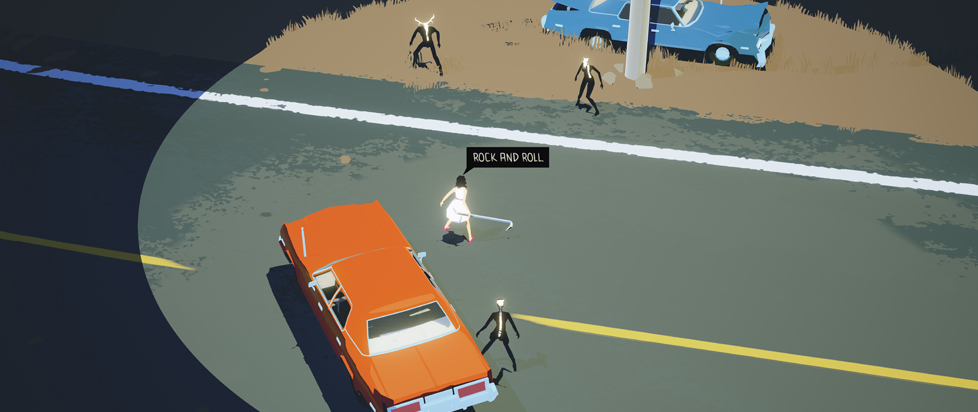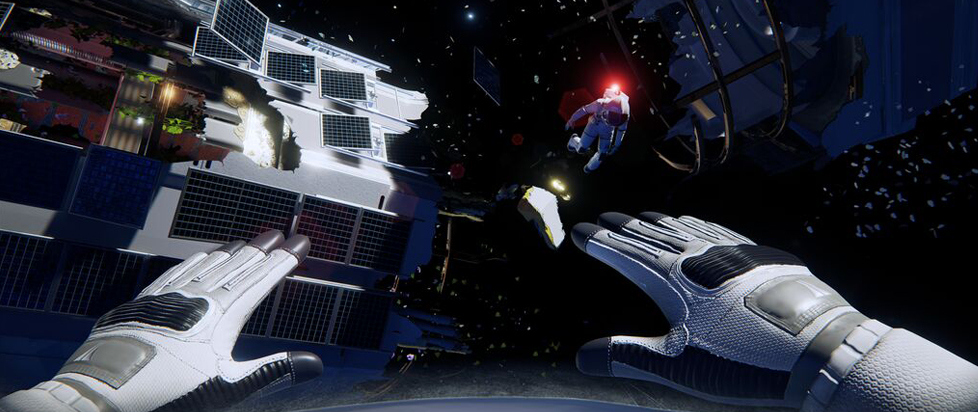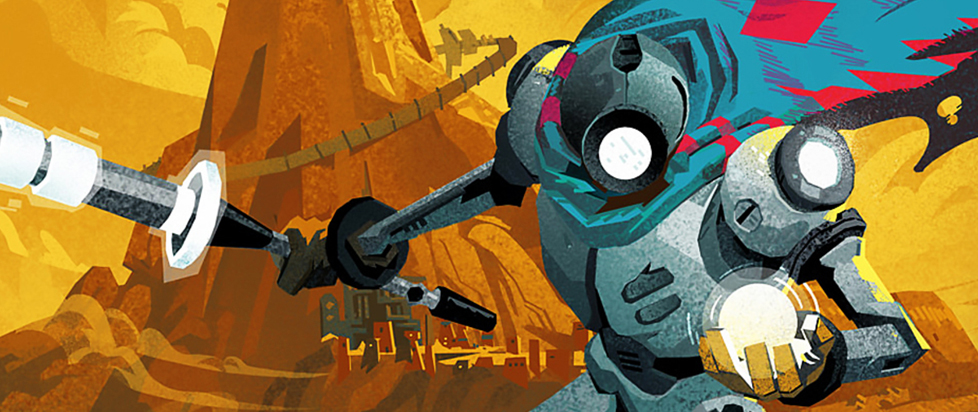
Creature in the Well: Between the Known and the Unknown
This feature is reprinted from Unwinnable Monthly #136. If you like what you see, grab the magazine for less than ten dollars, or subscribe and get all future magazines for half price.
———
This series of articles is made possible through the generous sponsorship of Epic’s Unreal Engine. While Epic puts us in touch with our subjects, they have no input or approval in the final story.
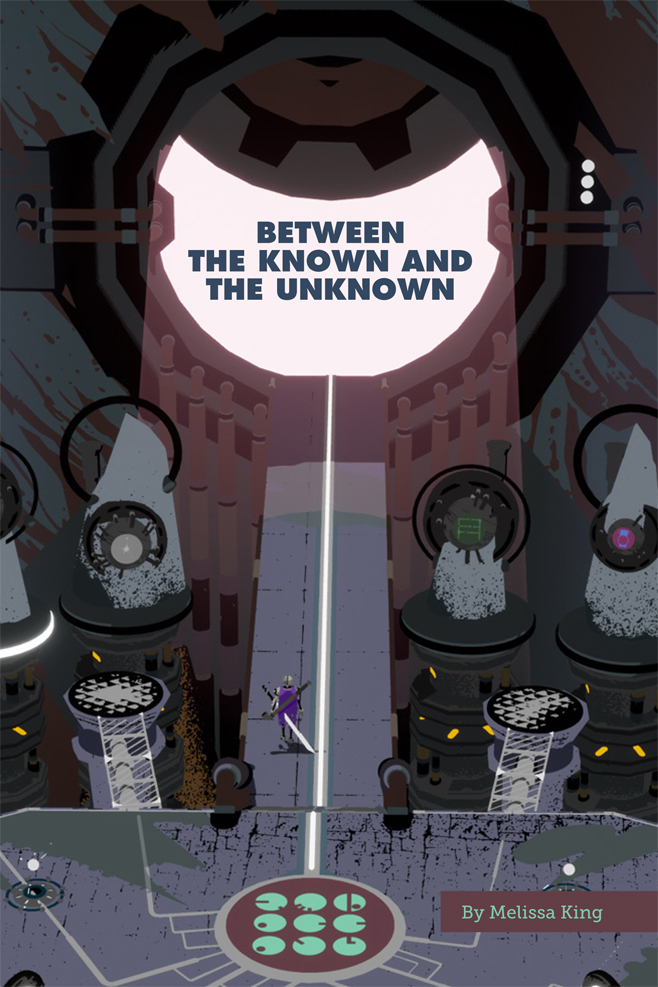
Videogames are a medium made up of contradictions. While one might have you reflecting on heavy concepts like what it means to be human, another will try to give you a similar experience to non-digital games like ping-pong.
Creature in the Well aims to check both boxes.
Here’s how Bohdon Sayre, Game Director, explains it:
“Creature in the Well is a game about electricity, kinetic energy and trying to control chaos. It’s an unusual mix of top-down dungeon crawlers and classic brick breakers. You play as a sword-swinging robot, but instead of attacking any living creatures, you wield your tools to charge up orbs of electricity and restore power to an ancient facility buried deep in a remote desert mountain.”
He continues, “A powerful foe has existed for centuries with the sole purpose of keeping you and others of your kind from accomplishing your mission: activate the machine and stop the eternal sandstorm that has trapped the inhabitants of your small town for hundreds of years.”
Sayre then concludes, “It’s a game about dealing with fear and isolation, as well as just having fun bouncing tons of balls around a room of bells and whistles.” With such a kicker of a sentence, I had to press him for more details. How do you balance such a serious mood with typically lighthearted mechanics?
“Some of my favorite content is both serious and funny at the same time,” he explains. “A good example is probably Dark Souls, which is terrifying, but somehow at the same time very comedic.” If you’ve ever seen someone get bonked by a boulder in the first game’s Sen’s Fortress level, you’ll know what he means.
So, how did Sayre and his co-director, Adam Volker, pull off this kind of game?
“Since we started with a pretty playful core mechanic, I think the focus at one point became about adding in more of the mood and eerie tones that we wanted from the creature and its story. For this game, I think the story is lightweight enough that you can easily just enjoy the fun of the game, but if it resonates with you, there’s deep emotion in the backstory of the creature and the town for anyone who wants to connect with it.”
Sayre doesn’t think they had to make a conscious effort to balance the two opposites. Rather, it was instinctual for them to add mood-driven elements to go along with the gameplay.
***
Creature in the Well started as one of three simple prototypes that Sayre and Volker were working on at the time. You played as a cylinder with a stick that hit a ball around a room, and you would have to anticipate where to bounce the ball and hone the precision to aim it just right. The prototype was originally going to go into a multiplayer direction where players would try to score goals on each other, but it ended up getting more objects and a puzzle room that served as the foundation for Creature in the Well’s dungeons. The final product ended up having heavy influences from Zelda games and Breakout.
The game’s journey from prototype to release consisted of plenty of back-and-forth between gameplay and story design. At first, the two directors considered having procedurally generated puzzle rooms, but they ended up crafting each one by hand.
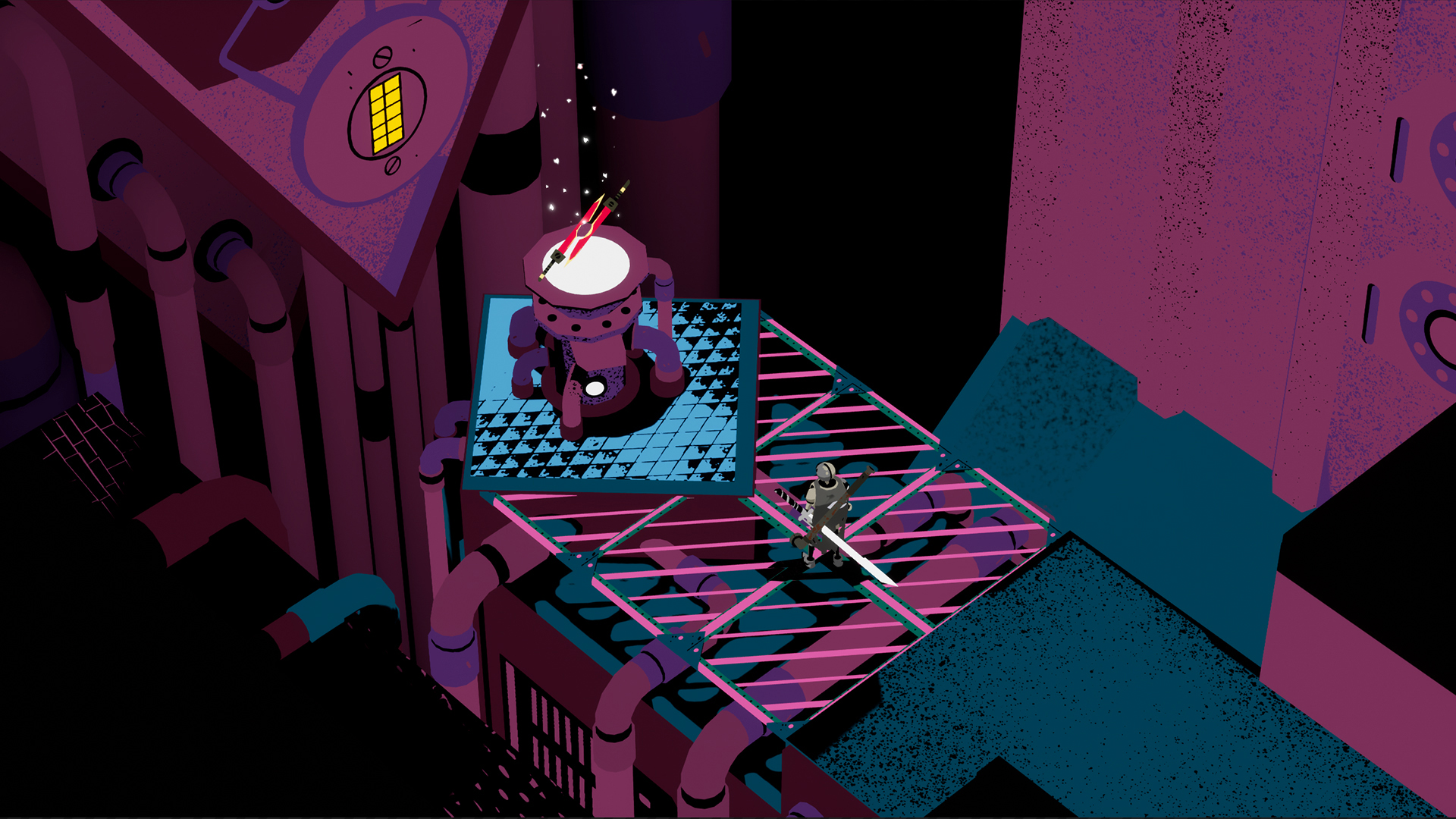
“At one point during early development, we decided the game’s story would be all about restoring power to an ancient temple,” Sayre says. “After that, we were able to work the story back into the mechanics by introducing concepts of electricity like charging up batteries and chaining objects together with circuit board-esque connections.”
He continues, “In fact, all of the objects in the game are programmed in a way such that they connect to each other and provide power to each other like a series of electrical switches. Using the story to inspire mechanic metaphors and vice-versa is something I find really effective and important.”
***
Sayre took lead on Creature in the Well’s technical development, but his career began in film and animation. After going to school for computer animation, he became a self-taught programmer and started out making animated short films for Moonbot Studios. Eventually, more gameplay-focused projects came along that gave him the chance to incorporate everything he loved about games growing up. He ended up at Flight School Studio, where he worked on games like Manifest 99 and Island Time before creating Creature in the Well.
“A lot of the things I care about in design are related to creating new player behaviors,” Sayre says of his approach to game design. “I find it incredibly satisfying when you discover some new flow or way of thinking that is at first very foreign, but eventually second nature. Games are such a great place to create this experience, but it’s mirrored in so many other aspects of life, like practicing a musical instrument, and I like to try to pull inspiration from any of them where possible.”
He continues, “At the same time, I think it’s very important to work in the right balance of familiarity. It’s impossible to know if you’ll like something that you’re unfamiliar with, so creating a well-designed path between the known and unknown is kind of the ultimate goal.”
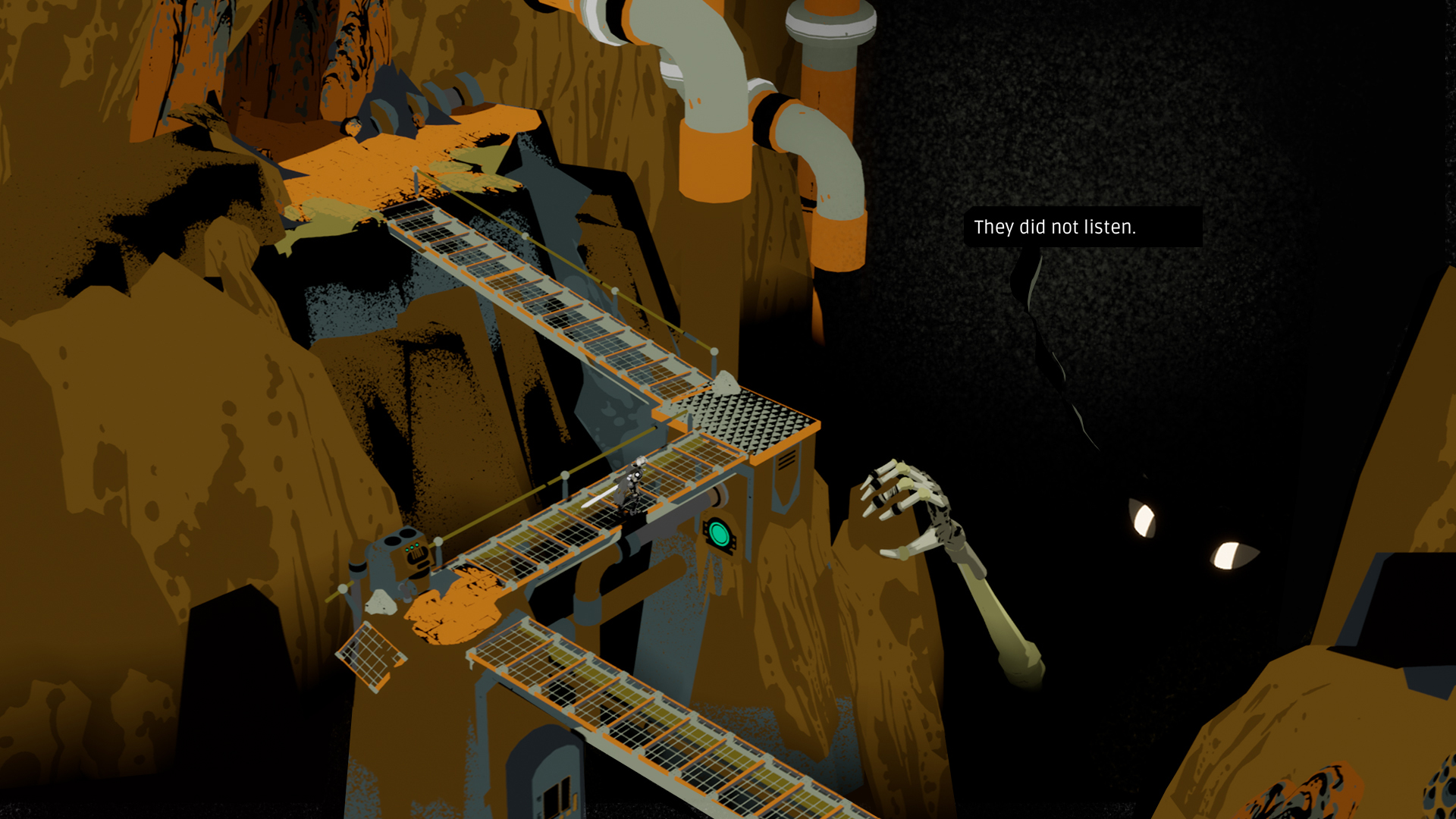
Sayre’s background in animation and storytelling gives him a holistic game development philosophy. “I was an artist before a programmer, and now that I spend more time doing the latter, I try to make sure I’m still working in those things that were foundational to me. There are a lot of elements in animation, cinematography and storytelling that I try to bring to any game project; but, it usually boils down to presentation and mood in a lot of ways,” he says.
While Creature in the Well runs on his code, Sayre believes that film and animation are the heart of his work on the game. “Good animation and well-developed characters are really important to me, and I think it makes a huge difference in immersing players in a world. For Creature in the Well, there are some moments outside of gameplay where presentation is essentially the entire focus, such as the desert opening, approaching the temple in town or the final confrontation sequence with the creature near the end. Even though a lot of the elements of those moments are based on systems or programmed instead of animated, I think they are all influenced by a love for film and animation.”
***
When someone plays Creature in the Well, Sayre hopes that they find the control they need over the temple’s orbs while enjoying the game’s mood and aesthetics. “The core mechanics are all about controlling something external to yourself – like juggling – and similarly it can take a lot of patience as well as trial and error,” he explains. “In hindsight, I think one of the shortcomings of the game was not giving players enough time and space to practice the very weird techniques that the game can demand.”
Creature in the Well lets the player choose their own path in many instances, but the flip side of that freedom is a less linear difficulty ramp. Sayre approaches game difficulty by starting with late-game mechanics, then working on the path to that gameplay. If he were able to go back and change the game’s difficulty progression, he would change the late-game experience to make the progression there smoother.
Sayre says of this process, “All of those ideas also hinge on one very important thing, which is whether you can successfully communicate or teach the things that you hope the player will learn. Developing unique, novel or interesting new mechanics is already a challenge, but foreign ideas also mean there’s a lot more work to be done in communicating all of that to the player. Several aspects of Creature in the Well’s core gameplay were massaged to try to balance all of the weird foreign aspects with foundational things that a lot of players are already familiar with.”
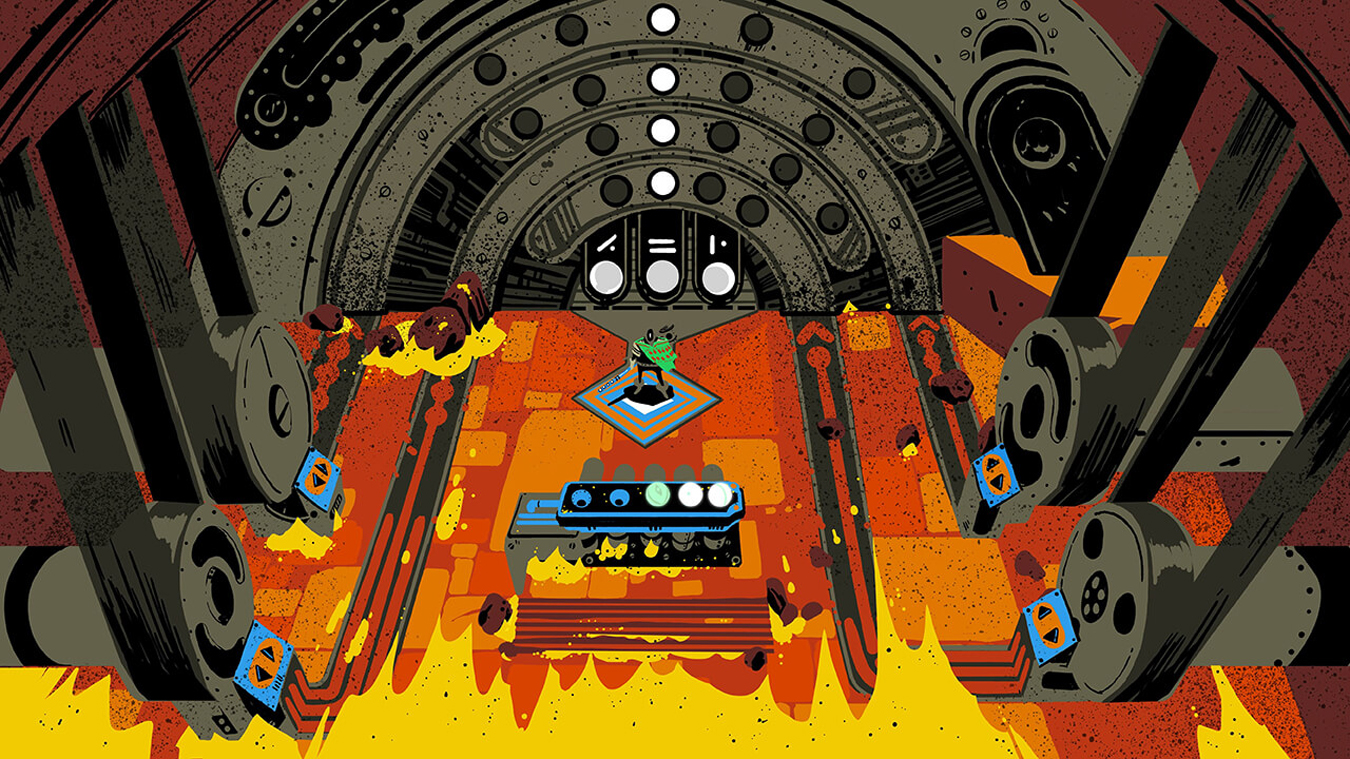
For example, early versions of the game didn’t have health or damage. Instead, Creature in the Well’s signature orbs were a form of currency, and the player lost when they ran out of those orbs. With so many other unique mechanics in the game, the co-directors ended up going with traditional health and damage to avoid overwhelming players.
“Every aspect of gameplay is a teaching moment, and making sure that there are enough cues, good positive or negative feedback and other information that the player uses to learn the systems is incredibly important and takes a lot of iteration time and user testing,” Sayre elaborates. “I think we did a pretty good job considering the short one-year development timeline we planned out, and some of the far-fetched concepts that we were trying to show players, but there’s always room for improvement!”
***
For Sayre and Flight School Studios, Creature in the Well created a path forward for new possibilities in their designs. “One of the goals moving forward was to reuse some existing systems and evolve them, whilst creating something new and entirely different,” Sayre says of their future. “I think it’s really important for small teams to use the tools available in the most effective ways so that you can accomplish a lot within smaller budgets. I’m still trying to work on that balance of incorporating both the familiar and the new, in the hopes of continuing to create unique content that is still really accessible.”
***
Creature in the Well is available now on Xbox One, PlayStation 4, Windows 10, Nintendo Switch and Steam.
Follow Bohdon Sayre on Twitter @bohdon.

